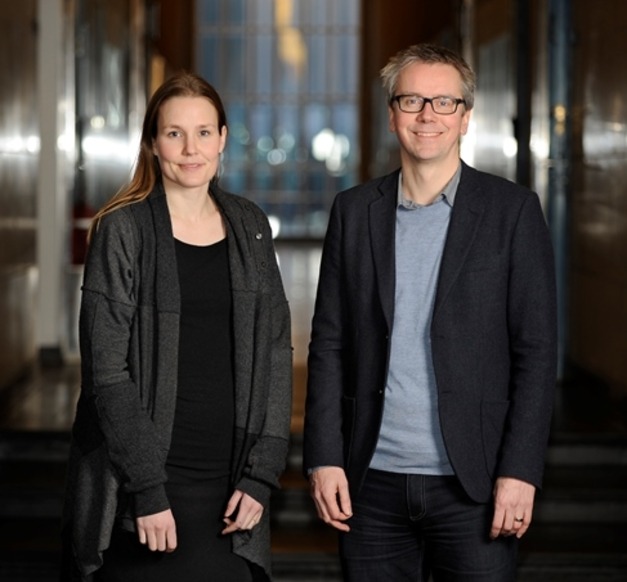Guðbjörg Jónsdóttir, doctoral student in life and medical science, and Sigurður Yngvi Kristinsson , Professor at the Faculty of Medicine and specialist in haematology at the University Hospital
“The prognosis of myeloma patients, a malign bone marrow disease, have improved drastically in recent years. However, we have shown that this patient group is at a much higher risk of being diagnosed with other unrelated malign blood diseases, for example acute leukaemia than others, and the reason for this is unknown,” says Sigurður Yngvi Kristinsson, Professor at the Faculty of Medicine and specialist in haematology at the University Hospital. “We were so fortunate that we got a doctoral grant for the project, financed by the estate of Ásrún Einarsdóttir.
Guðbjörg Jónsdóttir and Sigurður Yngvi Kristinsson
The main goal of the study is to try to better understand the causes and risk factors connected with the transformation from myeloma to acute leukaemia. To this end we have gathered information on over 20.000 myeloma patients diagnosed in Sweden over a 50 year period and we will take a careful look at those 1800 patients diagnosed with another unrelated malign diseases.

The recipient of the doctoral grant is Guðbjörg Jónsdóttir, a doctoral student in life and medical science. “The main goal of the study is to try to better understand the causes and risk factors connected with the transformation from myeloma to acute leukaemia. To this end we have gathered information on over 20.000 myeloma patients diagnosed in Sweden over a 50 year period and we will take a careful look at those 1800 patients diagnosed with another unrelated malign diseases. The main focus of this research has been on pharmaceutical and radiation therapies patients have undergone, however, the most recent research by Kristinsson’s group has shown that biological factors of the disease also feature in the process,” says Jónsdóttir.
Kristinsson‘s research group has in recent years reviewed the prognosis and side effects experienced by myeloma patients. “Because we have gathered substantial data on myeloma patients and other diseases we are at a vantage point to further understand these links,” says Kristinsson and adds that it is important to better understand the risk factors involved in the transformation. “Hopefully we will get one step closer with this study. In the future therapy for myeloma patients may be customised, so that each individual would get specially design treatment to suit his or her needs.”


